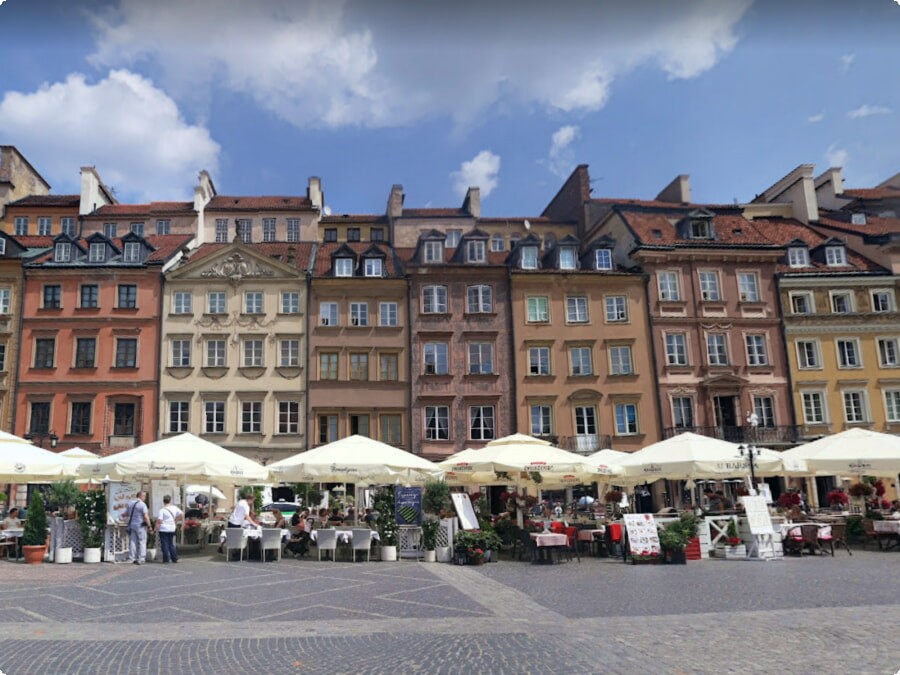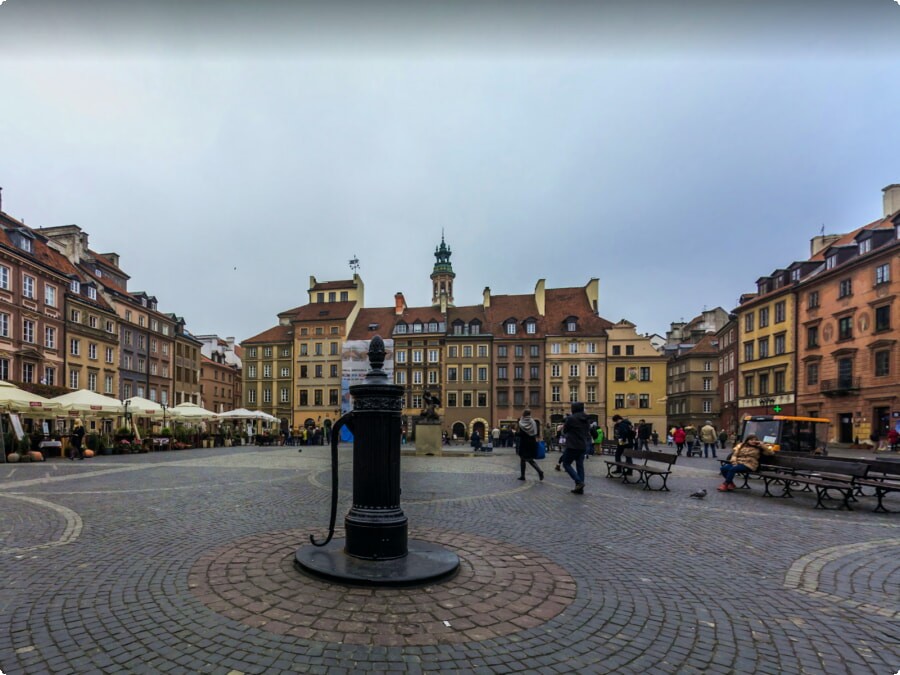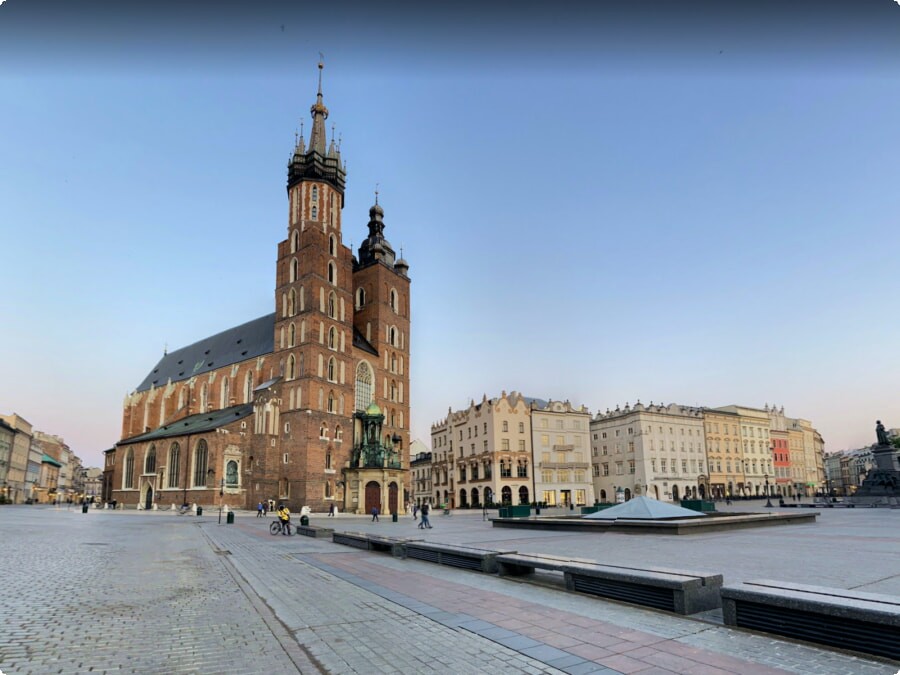Poland is an inexpensive, beautiful and underrated travel destination. This UNESCO World Heritage country has plenty to offer including the famous Auschwitz concentration camp and old town architecture.
The best time to visit is during summer, but if you love winter then Poland is also a great place for you. Its forests are home to wild boar and it is common to spot wolves or foxes!
1. Take a Walking Tour
If you want to get the most out of your trip to Poland, you’ll need to explore on foot. This allows you to see parts of Poland that most visitors never experience. You can take in the narrow cobbled streets of Krakow, travel down the Dunajec River on a raft or horse-drawn sleigh in winter, and enjoy the fresh air of Lower Silesia.
One of the best places to take a walking tour is Warsaw, Poland’s capital city and a UNESCO World Heritage Site. Here, you can visit the Old Town, binge on pierogis, and learn about the Polish national uprising and the Warsaw ghetto uprising in WWII. You can also find out about the city’s history of resistance in museums that highlight the fight against Nazi occupation.
Other cities like Gdansk offer tours that will teach you about Poland’s rich history. In Gdansk, you can walk through Park Oliwski which is adorned with statues that represent the virtues of citizens (Prudence, Justice, and Piety). You can also go to the European Solidarity Center, a museum dedicated to the Polish labour movement that helped end communism in the country.
If you’re an outdoor adventurer, hiking in the Polish mountains is a must-do activity. Located just two hours from Krakow, the rugged High Tatras form part of the granite Carpathian Range and provide a natural border between Poland and Slovakia. The mountain range is home to a variety of trails, including the tough route up Kozi Wierch (2,291m) and Mount Rysy (2,499m), which offers 360-degree views of over 100 peaks. You can also hike in the pristine Babia Gora National Park, whose limestone Dunajec Gorge is a UNESCO World Natural Heritage Site.
Tourists consider renting a car one of the best ways to enjoy all that Poland has to offer. Renting an economy class car in Gdansk airport will cost about 15 euros per day, in Krakow airport - about 16 euros per day.

2. Eat Some Pierogis
A trip to Poland would be incomplete without trying one of its most famous foods, pierogi. These delicious filled dumplings have been a big part of Polish culture for centuries. They can be savory or sweet and there are endless variations. You can find them at restaurants or even in grocery stores. The most popular ones are potato and cheese pierogi, sauerkraut and mushroom pierogi, and meat pierogi in the region around Podlasie. In the summer, people also enjoy eating pierogi filled with fruits, such as strawberries and blueberries.
These little dumplings can be a bit tricky to make. Monika recommends using a special flour called Maka Puszysta, which is made specifically for making pierogi dough. It is much finer than regular wheat flour and helps create a more elastic dough that doesn’t break apart during boiling. She also suggests heavily salting the cooking water. This will give the dough more flavor and help the fillings stand out. She added that many Polish women will personalize their pierogi by creating a decorative border to seal them. Some pinch the dough to make a scalloped edge, while others roll it in order to create a rope-like border similar to that of an empanada.
Stews are another common and hearty dish in Poland, especially during the cold winter months. Bigos, a traditional hunter’s stew, is loaded with a variety of ingredients such as cured meat and sausage, whole or pureed tomato, onion, mushrooms, honey, and rye bread.
Rosol, a chicken noodle soup, is another popular choice in the country. If you want to try something different, you can opt for grilled oscypek, a smoked sheep’s cheese.

3. Visit Warsaw’s Old Town
Poland is a beautiful country that has worked hard to shrug off its sordid past. While many people still think of a dark, soviet-style country, Poland has come a long way since 1989 and is now a fully developed modern state that is a member of the European Union.
When you visit Warsaw, be sure to stop by the Old Town and experience its incredible history. Almost nine tenths of the city was destroyed during WWII, but the remaining part is now considered one of the most historic areas in Europe and has earned UNESCO World Heritage status. You can walk through cobblestone alleys and medieval buildings that were reconstructed after the war, and it’s hard to believe that these structures were once a pile of rubble.
The Old Town is also home to the Royal Castle, where King Sigismund III Vasa established his capital from Krakow in 1596. It was at this palace that the first constitution in Europe was passed, and you can tour the castle to see its royal apartments and paintings from famous artists like Rembrandt and Bernardo Bellotto, better known as Canaletto.
Another must-see attraction is the Carmelite Church. This baroque structure is a striking example of Polish architecture and is filled with alter paintings from Franciszek Smuglewicz. You can climb the bell tower, if you’re brave enough, to get a view of the entire city and see how it all fits together.
If you’re looking for more cultural attractions, check out the Museum of Uprising and Liberation. This museum is a powerful and moving experience, telling the story of the 1944 uprising against Nazi rule through a combination of video, photographs, and personal testimony.

4. Visit Gdansk
Gdansk is Poland’s dynamic Baltic seaside capital and a must-visit. Along with Gdynia and Sopot, it makes up the TriCity area, a port city that’s part history, part swanky modernity. It’s also a great place to explore on foot, and most of the main sights are in the compact Old Town. A couple of days here should be enough time to take in the old-world atmosphere and eat your heart out, while visiting two of Poland’s best museums. Adding day trips to places like Malbork, one of the largest castles in Europe, or a visit to a Baltic beach will only add to the enjoyment.
The best way to start is with a stroll along the city’s Long Street, or Dietzschowska Street, which is bookended by two imposing gates, the Golden Gate and the Green Gate. This is a street of brightly painted gabled houses that seem to have been plucked from the pages of a fairy tale. The basilica that dominates this part of the city is the marvelous Brick-Gothic Basilica of the Assumption of the Blessed Virgin Mary, which boasts turquoise spires and an imposing bell tower. Inside, the clean white walls and sparse decoration create a serene and humble ambience.
Another of the city’s major attractions is The European Solidarity Centre, a contemporary museum dedicated to the movement that helped bring down communism in Poland and beyond. This museum is located a short distance from the shipyards where the movement began as a form of labor organizing, spearheaded by worker Lech Walesa. It’s well worth a trip here to understand the legacy of this historic movement and its impact. For nature lovers, it’s also worth taking a day trip to the pristine beaches on Sobieszewo Island for some seaside sunbathing and birdwatching.

5. Visit the Mausoleum of Struggle and Martyrdom
One of the most important historical destinations in Poland, this is a place that should not be missed. Dedicated to the Polish soldiers who gave their lives for the country, this monument stands as a reminder of all those who died for their homeland. Located on the Pilsudski Square, this neoclassical memorial is the only part of the Saxon Palace that survived WWII. It’s lit by an eternal flame and guarded by two Polish soldiers at all times.
The Mausoleum of Struggle and Martyrdom is a somber and moving experience. Visitors are led through a series of rooms that show how the prisoners were tortured and murdered. Some of the prisoners were shot and buried alive, while others were killed with electric guns. Guests will also be able to see the original detention cells that were used during the uprising.
This is a very emotional and sobering visit, but it’s a must-see for anyone visiting Poland. In addition, it’s an excellent way to learn more about the rich history of the country.
Located in Lublin, the POLIN Museum is one of the most interesting historical sites in the country. It’s home to a large collection of artifacts from the uprising, and it is filled with interesting information. This museum is a must-see for any history buff.
While you’re in Lublin, you should make sure to visit the former Pawiak Prison. This historic site was used by the Gestapo during World War II to hold and torture Polish resistance members. It contains a series of 10 insulated cells, which have been preserved in their original condition. In addition, it has a number of other exhibits that give you a sense of what life was like for the prisoners.